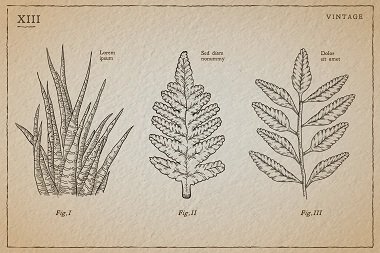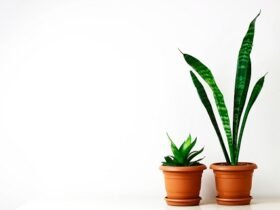The ZZ plant (Zamioculcas zamiifolia) is a popular houseplant known for its attractive, glossy leaves and easy care requirements. Its history and origin are fascinating, spanning various regions and cultures. This comprehensive guide will delve into the native habitat and natural environment of the ZZ plant, its discovery and scientific classification, its cultural significance in different regions, and its introduction to indoor gardening and global popularity.
Native Habitat and Natural Environment
Geographical Distribution
- Eastern Africa: The ZZ plant is native to Eastern Africa, specifically Tanzania, Kenya, and South Africa. It thrives in tropical and subtropical regions, where the climate is warm and humid.
- Forest Floors and Grasslands: In its natural habitat, the ZZ plant grows on forest floors and in grasslands, often in shaded areas. This adaptability to low light conditions makes it an ideal indoor plant.
Environmental Adaptations
- Drought Tolerance: The ZZ plant is highly drought-tolerant, an adaptation to the periodic dry spells in its native environment. Its thick, waxy leaves store water, allowing it to survive prolonged periods without rainfall.
- Rhizome Structure: The ZZ plant has a unique rhizome structure, which is a thickened underground stem that stores water and nutrients. This allows the plant to endure harsh conditions and recover quickly when favorable conditions return.
- Low Light Tolerance: Growing in shaded areas, the ZZ plant has adapted to thrive in low light conditions. This characteristic makes it suitable for indoor environments with limited natural light.
Soil and Climate Preferences
- Well-Draining Soil: In the wild, ZZ plants grow in well-draining soil that prevents waterlogging and root rot. They prefer sandy or loamy soil with good aeration.
- Warm Temperatures: The ZZ plant thrives in temperatures ranging from 60-75°F (15-24°C). It can tolerate occasional drops in temperature but is sensitive to frost.
Discovery and Scientific Classification

Early Observations
- First Descriptions: The ZZ plant was first described scientifically in the early 19th century. Botanists observed its unique characteristics and began documenting its attributes and habitat.
- Herbarium Specimens: Early explorers collected specimens of the ZZ plant, which were preserved in herbariums for further study. These specimens provided valuable information about the plant’s morphology and ecology.
Taxonomy and Nomenclature
- Scientific Name: The scientific name of the ZZ plant is Zamioculcas zamiifolia. The genus name “Zamioculcas” is derived from the similarity of its leaves to those of the Cycad genus Zamia, while “zamiifolia” means “with leaves like Zamia.”
- Family Araceae: The ZZ plant belongs to the Araceae family, which includes other popular houseplants like the peace lily (Spathiphyllum) and the philodendron (Philodendron). This family is known for its diverse and often ornamental members.
- Botanical Classification: The ZZ plant is classified as follows:
- Kingdom: Plantae
- Clade: Angiosperms
- Clade: Monocots
- Order: Alismatales
- Family: Araceae
- Genus: Zamioculcas
- Species: Z. zamiifolia
Historical Studies
- Botanical Research: Over the years, botanical research has expanded our understanding of the ZZ plant’s biology, ecology, and potential uses. Studies have explored its growth patterns, reproductive strategies, and adaptability to different environments.
- Economic Botany: The potential economic value of the ZZ plant has also been investigated, particularly its use as an ornamental plant in the horticultural industry.
Cultural Significance in Different Regions
Traditional Uses
- Medicinal Uses: In its native regions, the ZZ plant has been used in traditional medicine. Some cultures believe that the plant has healing properties and use its extracts to treat ailments such as earaches and inflammatory conditions. However, it is important to note that the plant is toxic if ingested, and its medicinal use should be approached with caution.
- Symbolism: The ZZ plant is often associated with prosperity and good fortune in various cultures. Its hardy nature and ability to thrive in challenging conditions symbolize resilience and endurance.
Folklore and Myths
- Local Legends: In some African cultures, the ZZ plant is surrounded by local legends and myths. It is sometimes believed to bring protection and ward off evil spirits. These cultural beliefs add to the plant’s mystique and appeal.
- Aesthetic Value: The aesthetic value of the ZZ plant has been appreciated for centuries. Its glossy leaves and elegant form make it a favorite in decorative arrangements and cultural ceremonies.
Introduction to Indoor Gardening and Global Popularity

Rise in Popularity
- Introduction to Horticulture: The ZZ plant was introduced to horticulture in the late 20th century. Its attractive appearance and low-maintenance requirements quickly made it a popular choice for indoor gardening.
- Global Distribution: Today, the ZZ plant is cultivated and sold worldwide. It is a staple in garden centers and nurseries, beloved by plant enthusiasts for its ease of care and striking beauty.
Indoor Gardening Trends
- Low-Maintenance Plants: The trend toward low-maintenance houseplants has significantly contributed to the ZZ plant’s popularity. Its ability to thrive with minimal care makes it ideal for busy individuals and novice gardeners.
- Air-Purifying Qualities: The ZZ plant is known for its air-purifying qualities. It can remove toxins such as xylene, toluene, and benzene from the air, contributing to a healthier indoor environment. This has made it a popular choice for homes and offices.
Horticultural Practices
- Propagation Techniques: The propagation of ZZ plants has become a common practice among gardeners. Methods such as division, leaf cuttings, and stem cuttings allow for the easy multiplication of plants.
- Hybrid Varieties: Horticulturists have developed hybrid varieties of the ZZ plant with unique characteristics, such as variegated leaves and compact growth habits. These hybrids add diversity to the available ZZ plant options.
Environmental Impact
- Sustainability: The ZZ plant is considered a sustainable choice for indoor gardening. Its low water requirements and minimal need for fertilizers and pesticides make it an environmentally friendly option.
- Green Spaces: Incorporating ZZ plants into indoor and urban green spaces helps promote biodiversity and create more pleasant living and working environments.
FAQs About ZZ Plant
ZZ plants can tolerate occasional movement, but frequent changes in location may cause stress. Try to keep your plant in a consistent environment to promote optimal growth.
Leggy growth can occur if the plant is not receiving enough light. Trim back leggy stems to encourage bushier growth and move the plant to a brighter location with indirect light.
Yes, ZZ plants can be used in larger terrariums. Ensure the terrarium has good ventilation and drainage to prevent excessive moisture buildup.
Acclimate your ZZ plant to a new environment by gradually exposing it to changes in light, temperature, and humidity. Avoid sudden changes, which can stress the plant.
Conclusion
By understanding the history and origin of the ZZ plant, as well as its cultural significance and horticultural practices, you can better appreciate this resilient and attractive houseplant. Whether you are a seasoned gardener or a novice plant enthusiast, the ZZ plant offers a rewarding and low-maintenance addition to your indoor garden.














